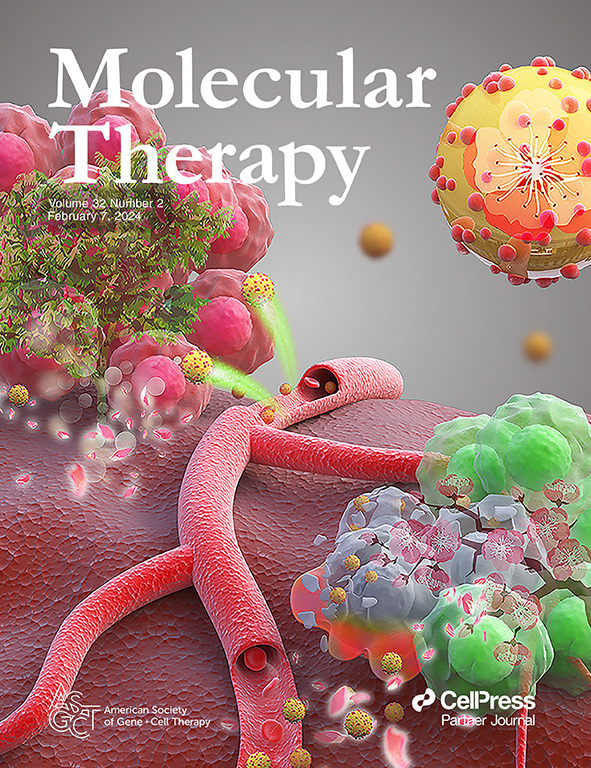双aav介导的基因治疗小鼠DFNB9耳聋模型中RNA与蛋白剪接的比较分析。
IF 12
1区 医学
Q1 BIOTECHNOLOGY & APPLIED MICROBIOLOGY
引用次数: 0
摘要
OTOF基因的病理突变导致常染色体隐性耳聋9 (DFNB9)。虽然双aav基因替代疗法已被证明可以部分挽救DFNB9患者的听力,但其治疗效果仍有待进一步探索。为了研究不同重组策略对OTOF基因治疗效果的影响,我们利用RNA或蛋白质剪接原理构建了5种双aav1治疗剂。基于RNA剪接的重组策略,AAV1-AK系统将oof -/-小鼠的听力恢复到55-70 dB,优于AAV1-AP和AAV1-TS系统。基于蛋白剪接,aav1 - inin系统将oof -/-小鼠的听力恢复到35-70 dB,优于AAV1-AK,并且在新生和成年小鼠注射后效果持续12个月。在aav1 - interin系统中,otoferlin再表达和带状突触数量及功能恢复的效果也优于AAV1-AK系统。这些结果表明,蛋白重组比核酸重组对DFNB9的基因治疗更有效。因此,本工作不仅为DFNB9基因治疗的优化提供了数据,也为其他大基因的递送提供了参考。本文章由计算机程序翻译,如有差异,请以英文原文为准。
Comparative analysis of RNA versus protein splicing in dual AAV-mediated gene therapy in a mouse model of DFNB9 deafness.
Pathological mutations in the OTOF gene cause autosomal recessive deafness 9 (DFNB9). Although dual-AAV gene replacement therapy has been shown to partially rescue the hearing of patients with DFNB9, the therapeutic effects still need further exploration. To investigate the impact of different recombination strategies on the efficacy of OTOF gene therapy, we constructed five dual-AAV1 therapeutic agents using RNA or protein splicing principles. Based on the recombination strategy using RNA splicing, the AAV1-AK system rescued the hearing of Otof-/- mice to 55-70 dB, which outperformed the AAV1-AP and AAV1-TS systems. Based on protein splicing, the AAV1-intein system rescued the hearing of Otof-/- mice to 35-70 dB, which outperformed that of AAV1-AK, and the effects lasted up to 12 months after injection in both newborn and adult mice. The efficacy of otoferlin re-expression and the number and functional restoration of ribbon synapses in the AAV1-intein system were also better than the AAV1-AK system. These results show that protein recombination is more efficient than nucleic acid recombination for gene therapy in DFNB9. Therefore, this work not only provides data for optimization of DFNB9 gene therapy, but also provides a reference for the delivery of other large genes.
求助全文
通过发布文献求助,成功后即可免费获取论文全文。
去求助
来源期刊

Molecular Therapy
医学-生物工程与应用微生物
CiteScore
19.20
自引率
3.20%
发文量
357
审稿时长
3 months
期刊介绍:
Molecular Therapy is the leading journal for research in gene transfer, vector development, stem cell manipulation, and therapeutic interventions. It covers a broad spectrum of topics including genetic and acquired disease correction, vaccine development, pre-clinical validation, safety/efficacy studies, and clinical trials. With a focus on advancing genetics, medicine, and biotechnology, Molecular Therapy publishes peer-reviewed research, reviews, and commentaries to showcase the latest advancements in the field. With an impressive impact factor of 12.4 in 2022, it continues to attract top-tier contributions.
 求助内容:
求助内容: 应助结果提醒方式:
应助结果提醒方式:


